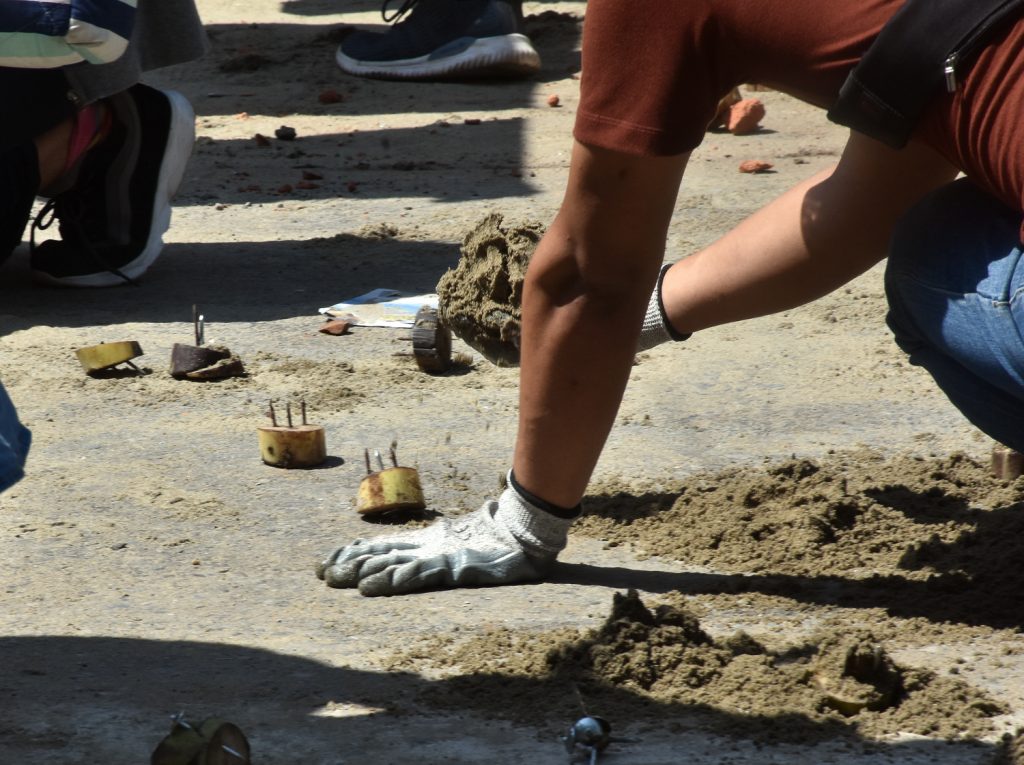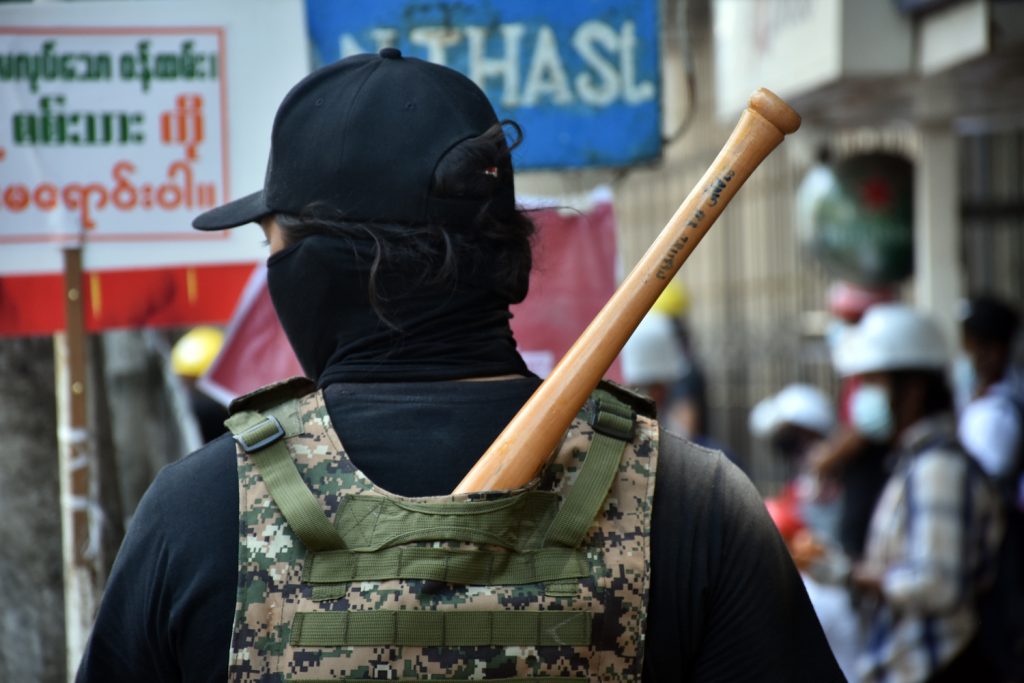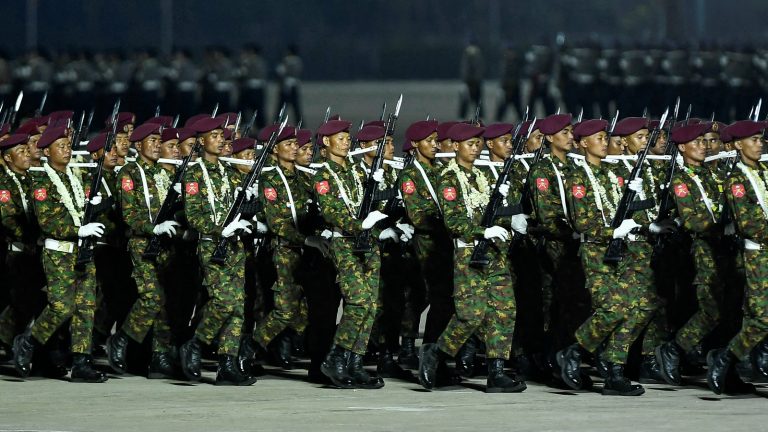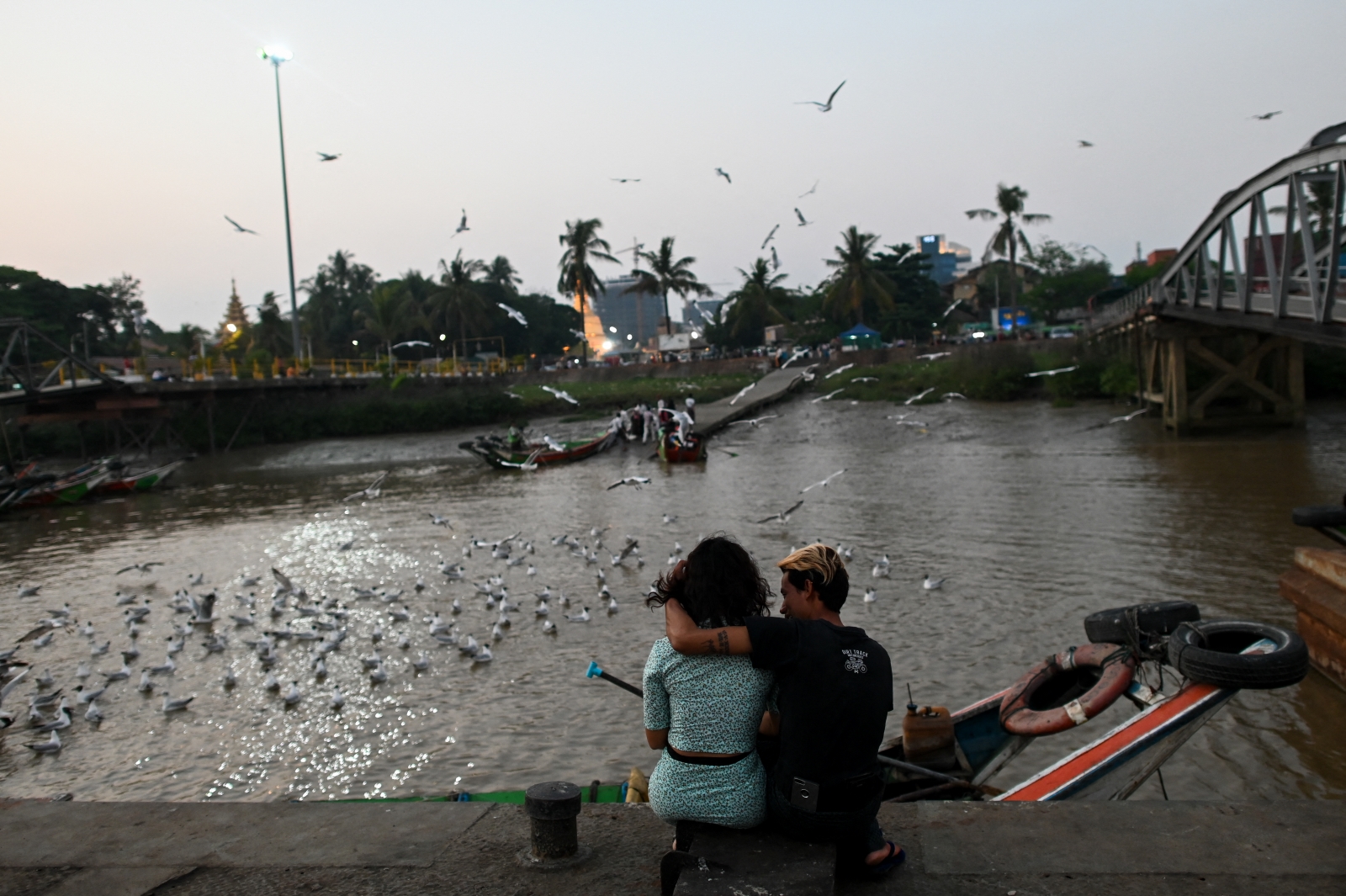Small, independent groups are waging guerrilla warfare on the streets in an effort to undermine the military regime but the rising violence has some Yangon residents worried for their safety.
By FRONTIER
In the immediate aftermath of the February 1 coup, Ko Min Wai was a staunch supporter of peaceful protests.
But when the security forces began brutally crushing demonstrations in March, the 26-year-old engineering graduate and some friends resolved to take the fight up to the Tatmadaw.
“We can’t protest on the street because the army and security forces shoot us with real bullets. But we must revolt against the junta, so we choose armed revolution,” Min Wai told Frontier on May 24, asking not to reveal his real name for safety reasons.
That month, he and his friends travelled from Yangon to an area under the control of an ethnic armed group and underwent a month of military training. A total of 50 young people participated in the course, he said.
Now back in Yangon, Min Wai and other members of his 10-person group are waging what they call “guerrilla warfare” in the commercial capital. They have planted hand grenades at barracks for police and soldiers as well as in government offices.
“I learned how to fight using explosives and guns. Then we returned to Yangon to attack the junta’s army,” he said. “We used hand-made bombs to attack soldiers in some townships in May. We have carried out three missions in Yangon.”
From protest to armed struggle
During the past four months, the anti-coup movement in many parts of the country has morphed from peaceful mass protests into something more like an armed uprising.
The massive street protests of February and March dwindled as the security forces began using lethal force against peaceful demonstrators. Figures compiled by the Assistance Association for Political Prisoners from the day of the coup to June 3 show that 845 people have been killed by the security forces, and 5,652 people have been arrested, of whom 4,509 remained in custody. Arrest warrants had been issued for another 1,931 people.
In response to the rising casualty toll from the disproportionate use of force by soldiers and police, many young people like Min Wai began to consider spurning non-violent protests in favour of more active forms of resistance. Hundreds, if not thousands, of young people have fled to border areas under the control of ethnic armed groups to receive military training.
Although peaceful protests continue to be held, often as flash mobs to minimise the risk of arrest, assassinations and bombings have become more common across the country, particularly since the start of May.
U Aung Myo Min, the NUG’s minister for human rights, said the military was “pushing the youth to take up arms” through its violence. “The military has used weapons to crackdown on peaceful protests. So, the young people have made a choice and they are going to fight back,” he said.
These attacks are usually carried out by secretive groups that sometimes label themselves as “UG”, an abbreviation for “underground”. In one such incident, three members of the hardline pro-military group known as Pyusawhti were killed in a shootout in Sagaing Region’s Mingin Township on June 3 with members of Nalseemachar Moegyo Mhone Tine, or Thunderstorms-Without-Borders, a protection force established by township residents that is allied with but not under the direction of the Mingin branch of the People’s Defence Force.
In Yangon, small, independent guerrilla groups like Min Wai’s have added yet another dimension to the already complex cast of armed actors resisting the coup. These groups, which have no affiliation with the National Unity Government or ethnic armed groups, have demonstrated a willingness to use asymmetrical warfare and non-conventional tactics to achieve their goals.
Interviews by Frontier indicate that there are at least 10 urban guerrilla outfits operating in the country’s main cities.
Radio Free Asia has reported that there have been more than 300 bombings in Myanmar since the coup. Scores of these attacks targeted state schools in the lead-up to the resumption of classes on June 1.
In Yangon Region, independent media outlets have reported bomb attacks in Sanchaung, Yankin, Hlaing Tharyar, Thaketa, Hlaing, and South and North Dagon townships. Many of the bombings occurred at night and targeted ward and township government offices, schools, universities, and petrol stations. A bomb exploded in the car park at the Makro supermarket in Mingalar Taung Nyunt Township on May 20, but caused no casualties. On May 22, one of three soldiers guarding a school in Tarmwe Township was killed when they were shot at by an unknown group, DVB News reported.
Min Wai said residents should expect more attacks.
“In the coming months, we will attack more soldiers and dalan (informers). Our revolution is starting,” he said.
‘Preparing for war’

At the same time as these groups have emerged, the NUG has been trying to fulfill its goal of establishing a federal army.
It had initially hoped ethnic armed groups would quickly agree to work together, but soon realized the federal army was a long-term prospect. On May 5, it announced the formation of a People’s Defence Force, and has since had some success incorporating ad hoc self-defence groups – many armed with little more than homemade hunting rifles – that emerged in the months after the coup into the PDF.
Many armed groups in urban and rural areas responded to the announcement by publicly declaring their loyalty to the PDF and agreeing to accept its command and a code of conduct outlined by the NUG.
Speaking at a press conference on June 5, Deputy Minister for Defence Daw Khin Ma Ma Myo said many local PDFs are “preparing for war”, and the NUG will “launch a battle call in the future when the time is right”.
The number of groups is proliferating. In Talote village tract in Mandalay Region’s Myingyan Township, residents say three groups carried out attacks on the security forces in May: the Myingyan People’s Defence Force, which is aligned with the NUG, and two independent groups, the Dictatorship Revolutionary People’s Army and the Zero guerrilla group. The latter two were formed before the MPDF.
Ko Myint Maung (not his real name), a 28-year-old Yangon resident and member of the national level PDF under the NUG, said the NUG has appointed PDF leaders at township and regional level. He said the NUG was also working to develop relations with more armed groups, as well as seeking to work more closely with EAOs.
“They are connecting step by step,” said Myint Maung. “Soldiers in our PDF are well organised. We are trying to connect with other armed groups as well.”
However, like Myanmar’s long-established ethnic armies, not all of the newly formed militias and underground networks are interested in being under the command of the NUG. Min Wai said that in the case of his group, it was a matter of timing and politics.
“We were formed before the NUG announced the PDF,” he said.
Min Wai said his group would be willing to join forces with the PDFs if it received an assurance that the NUG was committed to the complete destruction of the Tatmadaw. Group members are also concerned about whether they will receive supplies from the NUG, as well as what they say is its bureaucratic hierarchy.
Min Wai is insistent that there be no negotiations with the Tatmadaw. “We do not want any discussions with the military. If the PDF’s revolutionary policies are strong, we will work together. We are monitoring the situation and we are trying to link up with other guerrilla groups for our operations,” he said.
Karen National Union spokesperson Padoh Saw Taw Nee said he had warned the NUG that unaffiliated groups may become a liability.
“We accept that the people have responded with armed revolution to oppose injustice and that they have the right to self-defence. But a lot of groups not being under a unified command will be a problem in the long term,” he said.
Safety concerns
As the death toll from guerrilla attacks slowly rises, security has been tightened at likely targets in Yangon, such as township General Administration Department offices and police stations.
But the attacks are also creating anxiety among the city’s residents.
Ko Naing (not his real name), 36, owns a beer station in Sanchaung Township, where there were three bombings last month, including an attack on the GAD office on May 21 that killed one soldier according to Khit Thit Media.
“I am worried about the bomb explosions. I don’t know who they are working for,” he said. “If there is a bomb attack on a site used by the security forces and they die I am not concerned, but I worry about innocent bystanders being harmed by bombing in public places.”
NUG minister Aung Myo Min, who has urged the guerrilla groups to adhere to the code of conduct, which the NUG released on May 26. The code enjoins PDFs and other armed resistance groups to target only enemies and to avoid harming civilians, attacking religious buildings, schools and hospitals, and not to abuse women and children. “Whether it’s PDFs or not, all revolutionary groups must adhere to the code of conduct,” he said.
But Aung Myo Min acknowledged that ensuring compliance was going to be difficult. “There are too many groups and they are not connected, so there is a high risk of the code being breached,” he said.
However, Min Wai said it was the military that was ignoring the rules of conflict.
“The military has deployed forces at schools and at universities and has opened fire from those locations,” he said, adding that his group was following the rules it learnt when it was being trained. “We are not the Myanmar military.”
Ko Htet Aung (not his real name), a 25-year-old guerrilla fighter in Yangon, said his group was determined to set its own standards. “We decide what we can do and how to carry out attacks. We devise our own strategy,” he said. “The guerrilla attacks will increase in the coming months.”
Beer station owner Ko Naing said many people were anxious about bomb attacks in Yangon and other areas.
“We don’t want bombs, but we also cannot live under a military dictatorship,” he said. “I pray that civilians are not harmed too much.”







